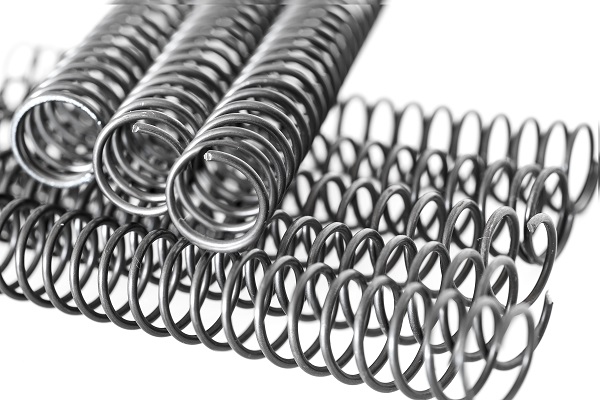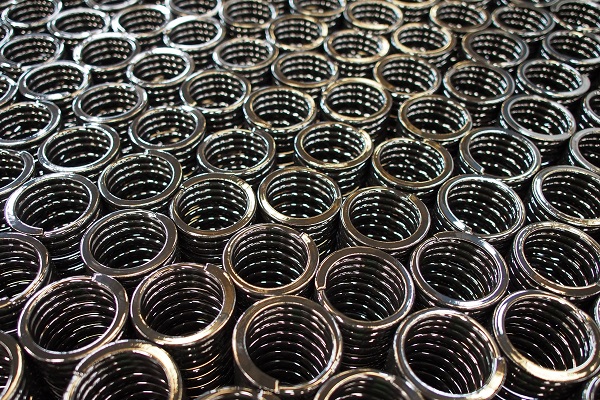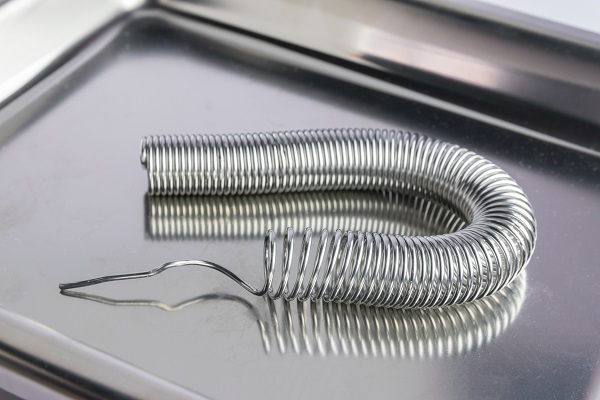Stainless Steel Springs
Nowadays, stainless steel is being used increasingly in manufacturing springs. This material is strong and robust, and does not stain or corrode easily even in harsh environments. In addition to this, certain alloys of stainless steel offer better resistance to high temperature. Precipitation hardening (PH), martensitic, austenitic, duplex, and ferritic are a few types of stainless steel. Out of these types, austenitic and precipitation hardening (PH) are used for making springs. SMSC is well-known for providing standard and custom stainless steel springs to its clients in across various industrial segments. We provide custom springs in variety of stainless steel grades such as 316, 302, and 17-7.
Properties of Stainless Steel Springs
The following properties will help our customers understand which spring meets their requirements.
- Grade 316: This grade is represented by the chemical formulation: Fe, <0.03% C, 16-18.5% Cr, 10-14% Ni, 2-3% Mo, <2% Mn, <1% Si, <0.045% P, <0.03% S. The 316 grade stainless steel consists of 2.0 to 3.0% molybdenum, which makes the material highly resistant to marine atmosphere. This is why, 316 grade is considered marine grade and widely employed in marine projects. The steel 316 is 85% non-magnetic with temperature operating range up to 550 oF (228 oC). This grade is ideal for aggressive environments. 316 stainless steel material can resist alkalis, salts, and most chemicals. Furthermore, this grade of stainless steel has a high creep strength at high temperatures. We provide 316 stainless steel springs to manufacturers in oil and gas, marine, and refinery industries.
- These springs are used in a number of diverse applications in various industries, such as:
- Heat Exchangers
- Pharmaceuticals
- Semi-conductors
- Food Processing & Handling
- Aerospace Products
- Consumer Products
- Medical Products & Processes
These springs are cleaned and passivated ultrasonically. The wire sizes of 316 stainless steel springs vary from 0.006″ to 0.072″.
- Grade 302: These springs are resistant under temperatures as high as 550 oF (228 oC). This grade comprises chromium, nickel, manganese, carbon, and silicon. The grade 302 is used for designing conical compression springs at cryogenic temperatures. The grade 302 springs can easily resist corrosion, and can perform even in harsh environments, where they may come in contact with chemicals, solvents, and acids. Type 302 grade stainless steel springs are used in applications such as medical, food process, dairy, etc.
- Grade 17-7: The springs made from this grade can withstand high temperatures than stainless steel 316 or 302. The springs made from this alloy can withstand temperatures up to 650 °F (343°C). The minerals in this composition are chromium, nickel, and aluminum. This grade possesses valuable property combinations such as high strength, hardness, good formability, excellent corrosion resistance, and minimal distortions. These springs are used in extreme environments such as petrochemical and chemical processing, energy industry, automotive applications, etc.
Types of Stainless Steel Springs
Our customers can order any of the following spring products made from stainless steel.
Benefits of Using Stainless Steel Springs
Customers can accrue immense benefits by using springs made from stainless steel.
- Improved resistance to corrosion
- Easy to Clean
- Resistance to High Temperatures
- Excellent Aesthetic Appeal
- Better structural integrity
- Great Product purity
- Ideal for High Temperature and Moist Environments
We provide springs in other material constructions and specifications. To know more about our stainless steel springs, you can contact us on our toll- free number 800-330-2460 or send us an email at smsc@windstream.net. You can Request a Quote to place your order.




 Upload Your CAD Drawing
Upload Your CAD Drawing